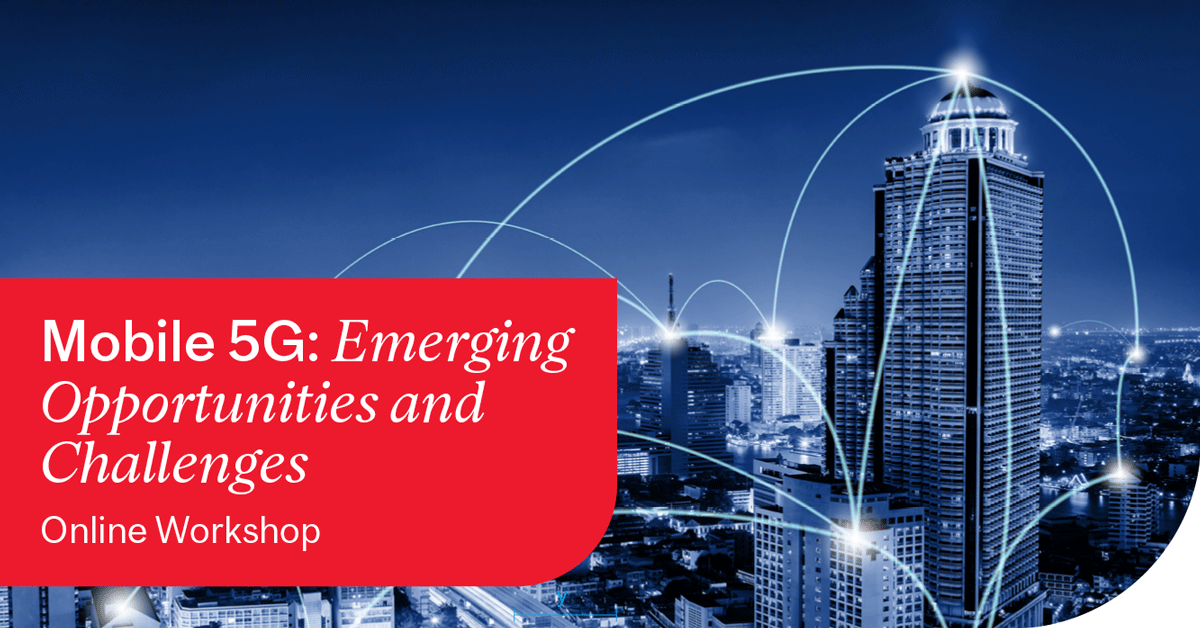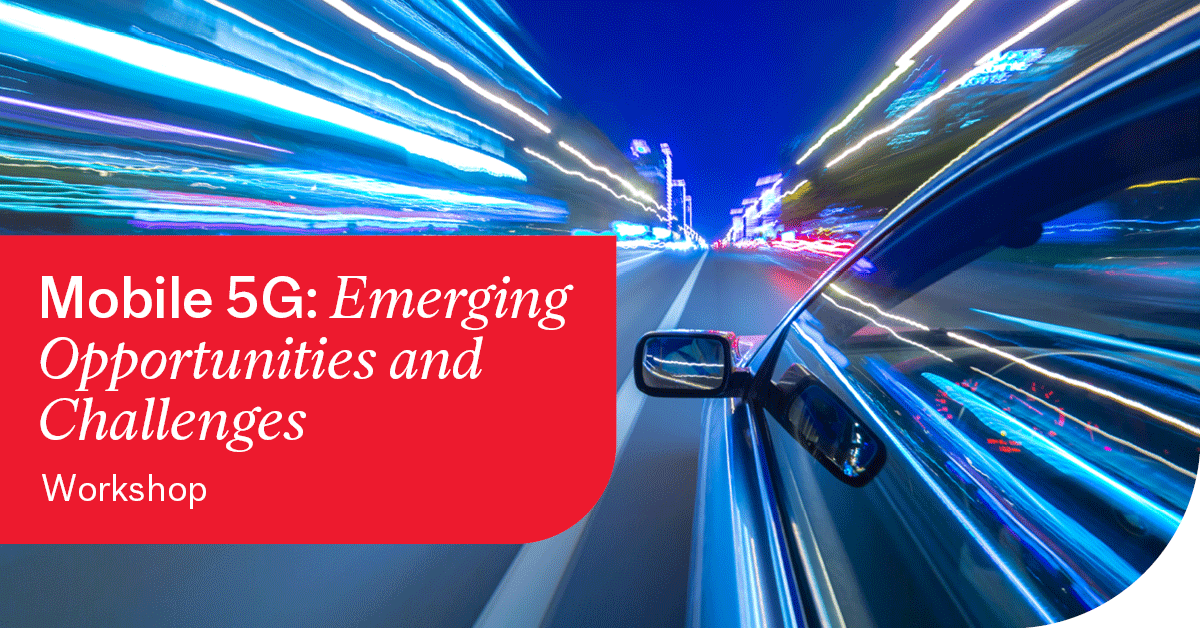The 5G geopolitics discussed previously (re: Part 2 of my blog) have also spilled into the health arena as well. Early reports of the spread of the coronavirus in China suggested connections with some of the early 5G deployments in the country and voilà – a new conspiracy theory was born! What’s more is that this fake news was amplified by a number of celebrities with significant global followings – a convergence of narcissism and ignorance, a potentially potent and dangerous cocktail. One of the unfortunate results of this conspiracy has been the burning of cell towers (and ironically, mostly of the 3G/4G variety) across Europe and North America with potential serious impacts to the provision of basic and critical services. Certainly, some of this behaviour is tied to the broader anti-mobile lobby that has been pushing the “dangers” of mobile technology for decades.
Nevertheless, given that 5G is a new technology and represents a significant departure from previous generations of mobile technology, it is certainly fair to ask whether there are any legitimate concerns that one needs to be aware of. These concerns can be bucketed into two groups: environmental and health.
On the environmental front, concerns centre predominantly around the significant 5G densification strategy via scaled deployment of small cells. This will inevitably drive impacts across energy consumption, sustainability policy, generation of electronic waste, and even urban aesthetics. The energy equation is extraordinarily complex given the multitude of opposing forces at play. On the one hand, 5G will deliver energy efficiencies (e.g., via novel beam steering technology) reducing the overall RF power levels. Also, small cells will be increasingly powered by sustainable sources including wind and solar. These will be offset by the expected dramatic increases in the number of connected devices and associated increased traffic capacity requirements. Indeed, Cisco’s latest predictions suggest that by 2023, there will be over 13 billion mobile-connected devices with approximately 10% supporting 5G capabilities. The full impact of 5G will certainly take time to unfold given that we are only at the beginning of this projected 10-year technology cycle. Nevertheless, proactive comprehensive lifecycle analysis (LCA) efforts considering device manufacturing, operations, maintenance, and disposal are needed to better quantify the full environmental impact and thus lay the foundation to effectively inform public policy, lawmakers, business leaders, and citizens alike.
On the human health front, the long-standing proponents of the adverse effects of RF exposure have received significant potential new angles of attack with the planned massive scale of new 5G-enabled RF generating devices to be deployed over the coming years. This is further compounded, they say, by the 5G strategy of leveraging “higher energy” millimeter waves for the “first time” with supposedly unknown consequences (in contrast to previous mobile generations that have focused on “lower energy” microwaves). What is often lost in these “debates” is the fact that these millimetre waves still fall well below the critical “ionizing threshold” (which sits in the high end of the UV range) at which the data clearly suggest that there is danger (e.g., cancer inducing radiation). That being said, there are some credible voices that have raised concerns, notably the 5G Appeal group (signed by around 400 scientists/doctors as of late August/2020) that recommends “a moratorium in the roll-out of the fifth generation, 5G, for telecommunication until potential hazards for human health and the environment have been fully investigated by scientists independent from industry”. On the other side of the debate, the conventional and cautious wait-and-see approach dominates the positioning of governmental health agencies around the world. In a recent Scientific American blog article, bioengineering expert Dr. Kenneth Foster argues that, even though there is an ongoing clear need for high quality research particularly in the higher end of the millimeter wave spectrum, “so far, at least, there’s little evidence of danger” associated with 5G deployment. In the end, using a mobile device (which results by far in the largest RF exposure to any consumer), at least for now, represents an individual choice. You can simply decide to unplug or go off mobile network either intermittingly or permanently…it is as straightforward as that.
What about any impact on mental health?
The rise of mobile hyper-connectedness over the last several decades has been a boon for many, but has also caused a high level of stress for others. Nomophobia (“no +mobile + phobia), the fear of not being connected, was coined about 10 years ago in the context of conventional mobile handset operation concerns tied to low battery power, lack of coverage (not enough “bars”) and slow responsivity (the infamous “spinning wheel”). With 5G’s support for massive increase in connection density, this stress factor will now inevitably include the impact of a new critical and controversial dimension – “surveillance” – as so well developed in Harvard’s Shoshana Zuboff’s recently published book, The Age of Surveillance Capitalism. This surveillance-related stress dimension represents the opposite challenge of nomophobia – a sort of “anomophobia” if you will (add that to your dictionary!), wherein the digital connectivity is in overdrive. How this nomophobia – anomophobia dynamic will play out regarding the mental health impact debate in the coming decade is still very uncertain.
Discover the Workshop!
5G-Powered “Surveillance Capitalism”
In the 20th century, dystopian futures anchored on an intelligent surveillance infrastructure have been described in various iconic novels including Orwell’s 1984 and Huxley’s Brave New World. The beginnings of the 21st century set the foundations of the modern context of the digital surveillance debate. In particular, the unscrambling of the GPS signal under the Clinton administration in 2000 (and the subsequent incorporation over the next decade of GPS within the new consumer 3G/4G mobile smartphones), in parallel with the rise of a number of large and successful social media platforms, have resulted in an implied Faustian bargain. This bargain consisted of consumers providing all sorts of invaluable personal and context-optimized data to the global platform/cloud players (often unbeknownst to them) in exchange for “enhanced” context optimized connectivity.
China’s experimentation with its new social credit system, which is subject to a number of misconceptions in the West, provides an early example of this modern surveillance or monitoring apparatus. In the West in particular, the free-wheeling previous decade dominated by this Faustian bargain was characterized by an exuberant enthusiasm for the perceived positive potential of technology to significantly improve our lives. More recently, this has given way to a growing consumer pessimism about how well private corporations and governments alike understand the “potential power of controlling the internet’s knowledge flow and showed their ability to wield that power”.
The new 5G edge, with its massive scale and high-performance potential, will drive this surveillance game to a much deeper level. And going deep has raised very serious questions as eloquently expressed by Thomas Friedman in a recent thought-provoking piece in the New York Times,
“Finally, these prediction products are traded in a new kind of marketplace that I call behavioural futures markets. Surveillance capitalists have grown immensely wealthy from these trading operations, for many companies are willing to lay bets on our future behaviour….Unfortunately, we have not developed the regulations or governance, or scaled the ethics, to manage a world of such deep powers, deep interactions and deep potential abuses.”
Although the ubiquitous deployment of this intelligent mobile and increasingly 5G-powered edge infrastructure dramatically raises the stakes regarding privacy and security, the convergence of AI with 5G as manifested in the associated closed loop automation of these emerging surveillance systems poses additional risks. More specifically, to what extent and in what capacity then do we need humans in the loop (HITL)? This is a complex question, but what is clear is that context is key. For example, the future success of autonomous transport enabled by 5G “surveillance” in saving lives is very much dependent on keeping humans out of the loop (HOTL)!
And then came COVID-19, with all the global efforts on so-called contact tracing, which has forced a reshaping of the surveillance question as recently discussed by Yuval Harari:
“In this time of crisis, we face two particularly important choices. The first is between totalitarian surveillance and citizen empowerment. The second is between nationalist isolation and global solidarity.”
Harari’s assertion that COVID-19 will drive a transition from “over the skin to under the skin surveillance” certainly puts a unique modern spin on the ancient Greek classic Delphic precept “Know Thyself!”
In the end, the rollout of 5G, particularly in our growing smart cities, will necessarily accelerate what is expected to be an increasingly contentious debate on “monitoring”, particularly in the West, on the development of new ideas and solutions to tackle long standing traditional questions as to “Who will know? Who will decide who knows? Who will decide who decides?”
Given all the simultaneous complex challenges and rich opportunities driving the 5G ecosystem, how does one then go about to best prepare for this new wave of massive disruption and innovation? This is the subject of the last part of my blog series on 5G entitled “Preparing for the 5G “Brave New World”.
Discover the Workshop!
|
 |
About John Nikolopoulos John Nikolopoulos is a Mobile/Cloud/Telecom/IT global technology/consulting executive with 25+ years in senior leadership roles in Sales, BD/GTM, Product/P&L Management, and Solution/Systems Architecture teams driving global channels, partnerships & enterprise deployments with $billions of global sales in diverse industry verticals within F500/Large Cap enterprises (Accenture, Nortel, and Sagemcom ) as well as high profile start-ups such as Corvis Corp., where he was part of the senior GTM/execution team leading to one of the largest exits in tech industry history with a 1.1 billion$ IPO. John has a significant international technical publication (50+) and public speaking record, contributed to multiple patent filings, achieved senior member status within the IEEE, and gained extensive Wall Street/Silicon Valley Analyst/Board of Directors executive communications experience. |



